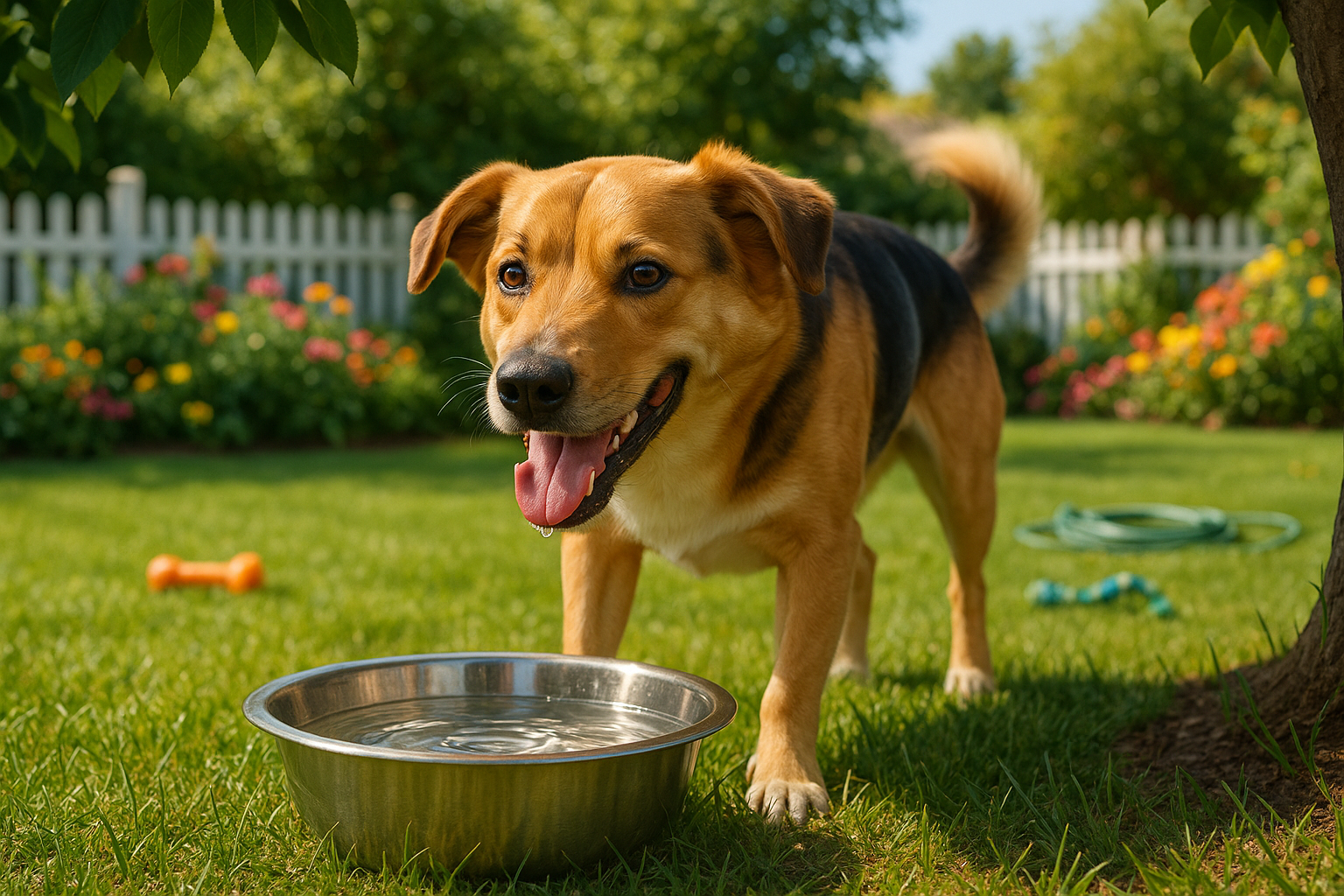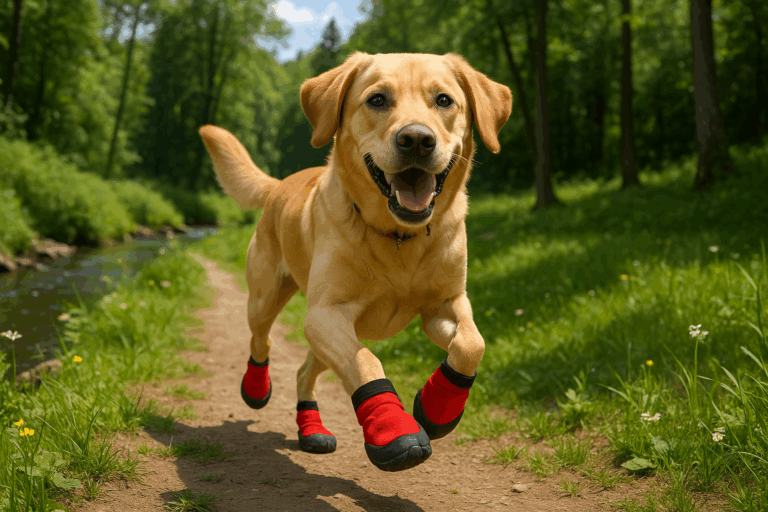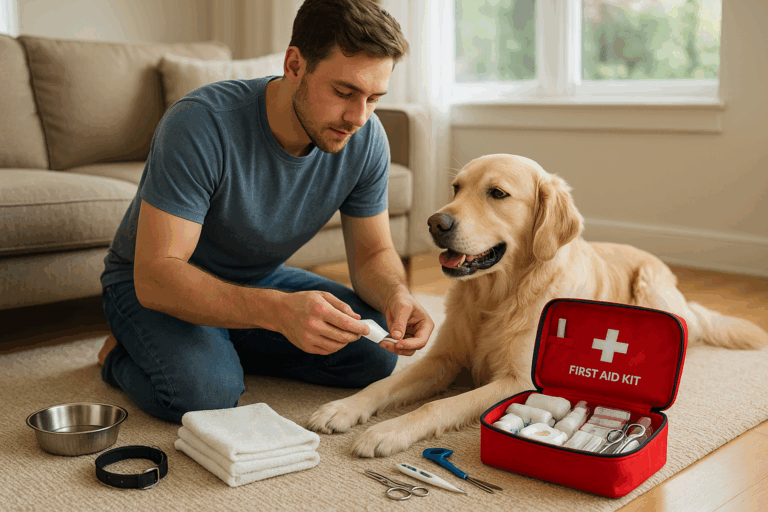An alarming yet often overlooked concern, canine dehydration can lead to a variety of health complications for your beloved pet, ranging from mild discomfort to severe organ failure. 💧
As conscientious dog owners, we strive to provide our pups with the best care possible, making it vital to understand the importance of proper hydration, the signs of dehydration, and effective strategies to prevent it. Welcome to the ultimate guide on preventing dog dehydration, a comprehensive resource aimed to help you keep your pup happy, healthy, and hydrated. 🐶
Why is Hydration So Crucial?
Just as with humans, water is a fundamental component of a dog’s body, making up approximately 70-80% of their body weight. It’s involved in nearly all body functions such as digestion, absorption, circulation, and transportation of nutrients. In essence, water is the life force that keeps your dog running at their best. When your pet isn’t getting enough water, it disrupts these vital processes and can lead to serious health consequences.
Understanding Dehydration in Dogs
Dehydration occurs when your dog’s body loses more fluid than it is taking in, affecting the balance of minerals like sodium, potassium, and chloride, which are essential for muscle function and energy production. It’s not just about hot weather or prolonged exercise; numerous factors can cause dehydration in dogs, including illness, insufficient water intake, and more.
Recognizing the Signs
Early detection is key in preventing dog dehydration from escalating into a life-threatening situation. As such, knowing the warning signs is of utmost importance. This guide will provide you with detailed insights into symptoms of dog dehydration, from obvious signs such as excessive panting and dry nose to less evident ones like loss of appetite and lethargy. 🕵️♂️
Prevention is Better than Cure
The adage “prevention is better than cure” is never more fitting than when it comes to dog dehydration. And the good news? With a little knowledge and diligence, dehydration in dogs is completely preventable. This article will arm you with practical tips and strategies to ensure your pup stays adequately hydrated, no matter the circumstance. We’ll delve into topics such as the ideal water intake for your dog, innovative hydration solutions like dog water fountains, and much more. 💡
In this ultimate guide to preventing dog dehydration, we will leave no stone unturned. We aim to equip you with the knowledge you need to ensure your pet stays happy and hydrated all year round. So, stay tuned, and let’s embark on this journey to better canine health together! 🐾
Understanding Dog Dehydration: Causes and Symptoms
Dog dehydration is a common but potentially life-threatening condition, especially during hot weather or after strenuous activities. Dehydration occurs when a dog loses more fluids than it ingests, leading to an imbalance in body chemistry. With 80% of a dog’s body composed of water, maintaining an adequate hydration level is crucial for their overall health and well-being.🐾
The causes of dog dehydration are multifaceted, ranging from simple reasons such as not drinking enough water to complex health issues like diabetes and kidney disease. High temperatures and vigorous exercise can also cause excessive panting, leading to rapid water loss. Other reasons include vomiting, diarrhea, and fever. As a responsible dog owner, being aware of these causes can help you take preventative measures and ensure your pup’s optimum hydration.
Identifying the symptoms of dehydration is equally important. Common signs include dry or sticky gums, loss of appetite, lethargy, sunken eyes, and decreased skin elasticity. A quick way to check for dehydration is to gently pull up the skin at the back of your dog’s neck; if it doesn’t snap back quickly, your dog might be dehydrated. However, for an accurate diagnosis, a visit to the vet is highly recommended.
Watch “How to check if your dog is dehydrated” by Vetstreet on YouTube for a practical demonstration.
The Importance of Water: Understanding Your Dog’s Hydration Needs
The daily water requirement for dogs depends on various factors such as weight, age, diet, and activity level. As a general rule, dogs should drink approximately one ounce of water per pound of body weight each day. Active dogs or those on dry food diets may require more. Fresh and clean water should always be readily available to your dog, and it’s essential to clean their water dish daily to prevent bacterial growth.
Moreover, understanding your dog’s hydration needs also involves knowing the signs when they are drinking too much water. Excessive water consumption can lead to a condition called water intoxication, which is as dangerous as dehydration. So, keep an eye out for symptoms such as lethargy, bloating, vomiting, loss of coordination, and in severe cases, seizures.
Check out the video “How Much Water Should Your Dog Drink a Day?” by Chewy on YouTube for a more detailed explanation.
| Dog’s Weight (lbs) | Daily Water Requirement (oz) |
|---|---|
| 10 | 10 |
| 20 | 20 |
| 30 | 30 |
| 40 | 40 |
Keeping Your Pup Hydrated: Tips and Tricks
Preventing dehydration in dogs is not as daunting as it may seem. The key is to encourage your dog to drink water regularly. Try adding a little chicken broth to their water bowl or purchase a pet water fountain to make drinking more enticing. Furthermore, always carry a portable water dish during walks or trips.
Feeding wet food is another excellent way to increase your dog’s water intake, as it contains up to 80% water. You can also give them hydrating treats such as watermelon or cucumbers, but remember to offer these in moderation and always without seeds or skin.
During hot weather, limit your dog’s exposure to the sun and avoid strenuous activities during peak hours. Keep your home cool and provide a shady spot in your yard. You might also want to invest in cooling products such as cooling mats or vests for added comfort.
Get inspired by “7 Tips to Keep Your Dog Cool During The Summer” by Zak George’s Dog Training Revolution on YouTube.
When to Seek Vet Help: Dehydration Emergencies
Despite your best efforts, there may be instances when your dog becomes severely dehydrated. In such cases, immediate veterinary attention is crucial. The vet will likely administer IV fluids and run tests to determine the cause of dehydration. Do not attempt to rehydrate your dog rapidly, as it can lead to further complications. The key is to seek professional help promptly.
Chronic dehydration can be a sign of underlying health issues such as kidney disease, diabetes, or cancer. Regular check-ups can help detect these conditions early and provide your dog with the best chance for recovery. If your dog is frequently dehydrated despite having access to clean water and a balanced diet, it’s time to visit the vet.
Watch “Dehydration in Dogs: How to Recognize and Treat It” by Dr. Karen Becker on YouTube for more insights on this topic.
Remember, when it comes to your pup’s hydration, being proactive is key. So, keep those water bowls filled and stay observant for signs of dehydration. Here’s to happy, hydrated dogs! 🐶💦

Conclusion
In conclusion, our journey exploring the depths of software engineering and IT has been profound and enlightening. As we have seen, these fields are not just about coding and machines, but rather about creating solutions that meet the needs and expectations of human beings. These are disciplines where technology and human creativity intersect, and where true innovation is born.
We began by examining the fundamental principles of software engineering and IT. We discussed how these disciplines involve a systematic approach to designing, building, and maintaining software systems. We delved into the essential skills required, including programming, problem-solving, and teamwork. But we also highlighted the need for softer skills, such as communication and empathy, underscoring the human element in these fields.👨💻
Next, we explored the different methodologies used in software development. We compared traditional waterfall models with more agile, iterative approaches, highlighting the strengths and limitations of each. We discussed how choosing the right methodology can significantly impact project success, and we stressed the importance of flexibility and adaptability in today’s rapidly changing tech landscape. 🔄
We then turned our attention to the world of IT, diving into topics such as networking, cybersecurity, and cloud computing. We discussed how these areas are becoming increasingly critical in today’s interconnected world, where data is king and security breaches can have devastating consequences. 🌐🔒
Throughout the article, we reinforced the importance of continuous learning and staying up-to-date with the latest trends and technologies. We touched on the value of certifications and specialized training, and we encouraged you to seek out opportunities for personal and professional growth. 🚀
Finally, we looked at the future of software engineering and IT, predicting exciting developments in areas like artificial intelligence, virtual reality, and quantum computing. We painted a picture of a world where technology is increasingly integrated into our daily lives, and where the possibilities seem endless. 🌌
But remember, as awe-inspiring as the future may seem, it is the here and now that matters most. The skills and knowledge you acquire today are the building blocks for the technologies of tomorrow. So keep learning, keep growing, and keep pushing the boundaries of what’s possible.
The journey we’ve undertaken in this article is just the beginning. There is so much more to explore and learn in the fields of software engineering and IT. So I encourage you, dear reader, to delve deeper, ask questions, and continue your own personal journey of discovery. Your input is valuable and your perspective unique, so please feel free to leave a comment or share your thoughts. Remember, sharing is caring. 😊
If you want to learn more about software engineering and IT, I recommend visiting The Computer Society’s Software Engineering Technical Committee and CompTIA’s website. They offer a wealth of resources and insights that can help you broaden your understanding and enhance your skills.
Thank you for joining me on this journey. I hope you’ve found it as enriching and enlightening as I have. Until next time, keep exploring, keep learning, and keep pushing the boundaries of what’s possible. After all, the future is in your hands. 🌍
References:
1. The Computer Society’s Software Engineering Technical Committee
2. CompTIA’s website



